
Hundreds of protesters march along streets in Tucson's south side to call for an end to immigration enforcement operations in the city and across the country, on Wednesday, June 11, 2025.
Tucson, Arizona – Joanna Cordova was driving east on Valencia Road heading to work Wednesday just before 6 p.m. when she saw protesters holding up signs and chanting along the busy main southside Tucson corridor.
Cordova had spent all day posting information on social media about Immigration and Customs Enforcement (ICE) operations in Midvale, a neighborhood on Tucson’s south side, free food assistance for Tucson residents and berating a family friend and others who voted for Trump.
As she left her house for work she thought to herself, “I should go to L.A.” She wanted to join a protest. She wanted to do more than show her rage online.
When she drove past the protesters on Valencia and Country Club roads, Cordova turned back and joined them, deciding she could be late to work.
A few minutes later, she found herself among more than a hundred protesters. “¡El pueblo unido, jamás será vencido!” she yelled in unison with the others.
Cordova said she doesn’t believe protesting will change much, especially when many of the small changes post the 2020 Black Lives Matter protests have been largely overturned. But being in community helped her release some of the anger she feels. She started crying when she joined the protest.
“This is healing right now,” Cordova said, tears pooling in her eyes again.
Across the nation, especially in Los Angeles, many are joining protests to feel that sense of community, but above all, to call for change.
Videos going viral on social media have shown ICE agents breaking car windows, separating parents from their children, raiding workplaces and taking people from gas stations.
In Phoenix, ICE agents have detained people as they leave immigration court. Through rapid response networks, community members and activists have been showing up in areas around Phoenix where masked ICE agents are seen, often in unmarked pickup trucks.
In California, videos show ICE agents ramming into a car to take a man into custody and chasing farmworkers in a field. Against California Gov. Gavin Newsom's wishes, President Donald Trump deployed thousands of troops from the National Guard and the U.S. Marines to Los Angeles earlier this week after community members protested ICE operations in the city.
As of June 1, more than 50,000 people were in ICE detention, according to data from the Transactional Records Access Clearinghouse (TRAC), a data-gathering organization associated with Syracuse University.
In an April 28 press release, the Trump administration announced they have arrested more than 151,000 people and deported more than 135,000, a drastic exaggeration from TRAC data, which shows 72,000 people had been removed from the country at the time of the White House announcement.
Tucson residents come together in anti-ICE protest
As ICE carried out raids in Tucson, Arizona, hundreds of protesters came together to call for an end to their operations taking place across the country.
‘United, we’re stronger’
Francisco Mendez said it’s been devastating to see videos of children being separated from their families.
“It feels nice to know that the worries I share aren't my worries alone,” Mendez said. “I see so many people from different backgrounds and it's very reassuring that there's still hope and that resistance comes in all shapes and forms.”
Mendez hopes the protests happening around the country raise awareness and empower more people to fight back against Trump’s immigration policies, he said.
“This is an attack on class and color,” he said. “And it'll spread if you don't stop it.”
Ramon Hernandez held up a Palestinian flag as he stood behind the crowd of protesters. For him, the fight against Trump’s anti-immigrant policies and the fight to liberate Palestine are intertwined.
“Standing up for Indigenous people, decolonization is the main thing,” Hernandez said.
Many others at the protest also held up Palestinian flags and wore a Keffiyeh — a traditional Arab headdress that has become a symbol of Palestinian solidarity.
“If we’re able to liberate Palestine, we’re able to liberate the world,” Hernandez said.
At the beginning of the protest, Patricia Martinez wrapped a Mexican flag around her back and stood under the shade of a tree next to her daughter, who also wore a Mexican flag on her back and covered her face with a Mexican flag bandanna. Her daughter held up a sign that read, “The Most Dangerous Immigrants Arrived in 1492.”
“I truly believe that united we’re stronger,” said Martinez, who has attended several demonstrations this year.
For her, the fight is personal. Her father crossed the border from Mexico to give her family more opportunities.
She said she feels angry and helpless seeing ICE officials take people from schools, churches, courthouses and their homes.
“It’s about our community, my people,” Martinez said. “My father is from Durango, (Mexico), and he came across, and it gave us an opportunity. So, we wouldn't be here if it wasn't because of them.”
Arrests ensue as police confront protesters
As protesters began their march from the corner of Valencia and Country Club roads to the ICE offices about a block north, they were met by four private security guards standing in front of a closed gate blocking the immigration building.
Most protesters stayed back, chanting and holding up signs that read. “RESIST,” “No One Is Illegal on Stolen Land” and “Chinga La Migra.”
But dozens of protesters pushed down metal barriers and moved closer to the security guards, yelling slurs at them and throwing balloons filled with paint. Some protesters also threw rocks and one person threw a smoke grenade. The security officers responded by shooting pepper balls, throwing flash bangs and using pepper spray as they backed away from the crowd.
Protesters in the back of the crowd yelled at others to remain peaceful and not agitate the security guards, but those up front continued to march toward the security guards, moving them behind the ICE offices as they yelled, “Quit your job!”
A few minutes later, the security guards left and the protesters headed back to the business plaza parking lot where about 30 Tucson police officers stood in riot gear at a distance, across another parking lot.
The crowd faced the officers. “No ban, No wall. Sanctuary for all,” they chanted, following the lead of a few people with megaphones.
The crowd eventually marched back to the main intersection, where they continued to protest, holding up signs and chanting on both sides of the busy main road. Drivers honked in support as they passed by. When the light changed, some protesters crossed the street. A man danced to the sounds of a drum as he shook maracas.
Later in the evening, as the sun was setting and fewer participants remained, Tucson police officers in riot gear lined up again and ordered the protesters to disperse. Most left the area, but some stood their ground, gathering on the sidewalk and off the street facing the officers.
Police started moving forward, ordering protesters to get back. Some officers pushed people back, causing a few of them to fall. Several officers held down at least two protesters who had fallen, while the rest formed a barrier to prevent civilians from interfering with their detention, continuing to push people back.
Four officers held down one of the individuals, their face down on the pavement as they screamed. The four officers carried the person away, their hands tied behind their back, their water bottle dragging against the road as they yelled, “I want a lawyer!” At least two protesters were arrested.
In a statement released by the Tucson Police Chief Chad Kasmar as the protest was occurring, he wrote that the department is not involved in federal immigration enforcement operations and would work to guarantee the safety of protesters.
“The department will continue to provide public safety support for gatherings and will only intervene if necessary to address criminal behavior that threatens people and property.”
Stephanie Casanova is an independent journalist from Tucson, Arizona, covering community stories for 10 years. She is passionate about narrative, in-depth storytelling that is inclusive and reflects the diversity of the communities she covers. She recently covered the criminal justice beat at Signal Cleveland, where she shed light on injustices and inequities in the criminal legal system and centered the experiences of justice-involved individuals, both victims and people who go through the system and their impacted loved ones.


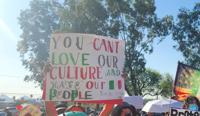
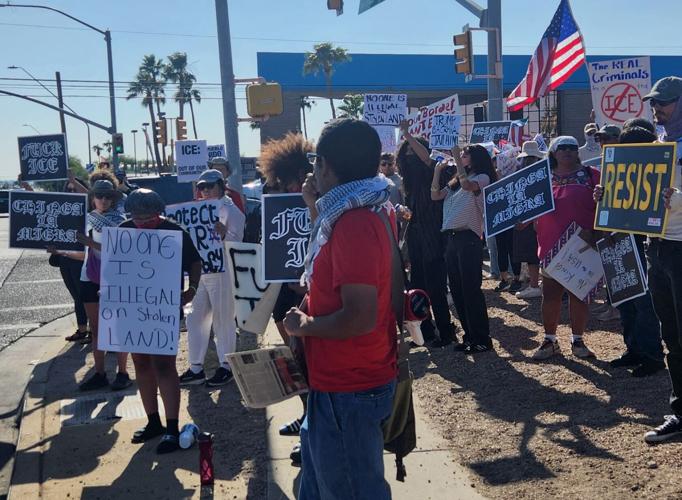
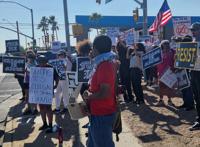

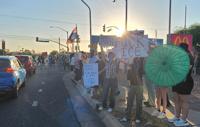
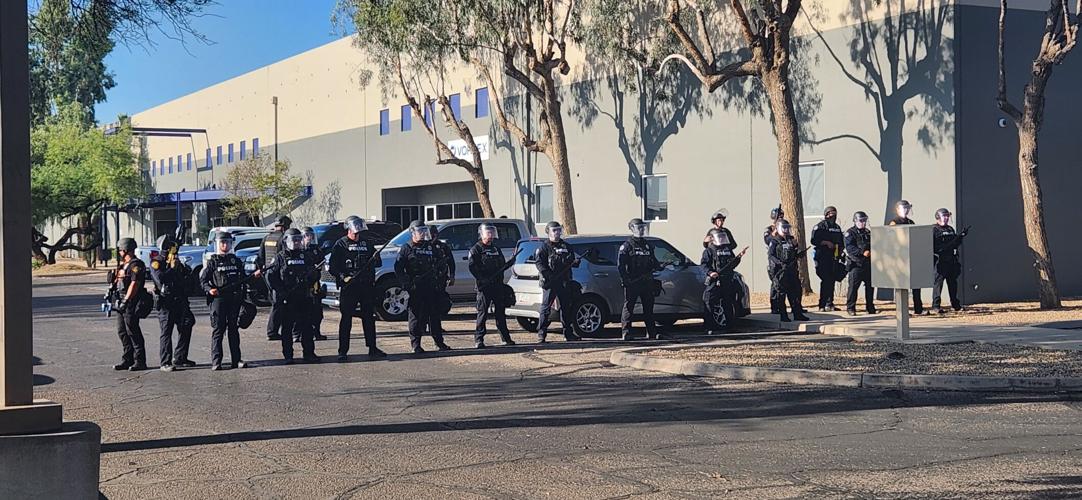




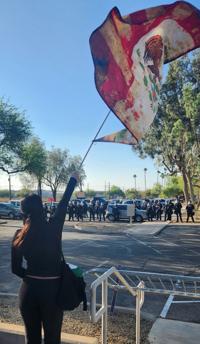




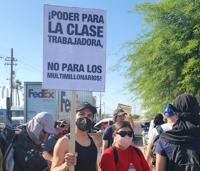

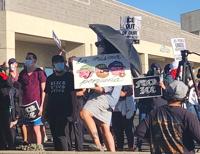





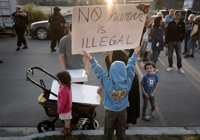

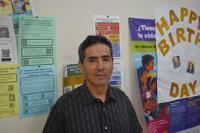

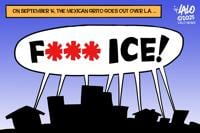

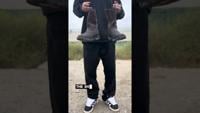
(0) comments
Welcome to the discussion.
Log In
Keep it Clean. Please avoid obscene, vulgar, lewd, racist or sexually-oriented language.
PLEASE TURN OFF YOUR CAPS LOCK.
Don't Threaten. Threats of harming another person will not be tolerated.
Be Truthful. Don't knowingly lie about anyone or anything.
Be Nice. No racism, sexism or any sort of -ism that is degrading to another person.
Be Proactive. Use the 'Report' link on each comment to let us know of abusive posts.
Share with Us. We'd love to hear eyewitness accounts, the history behind an article.